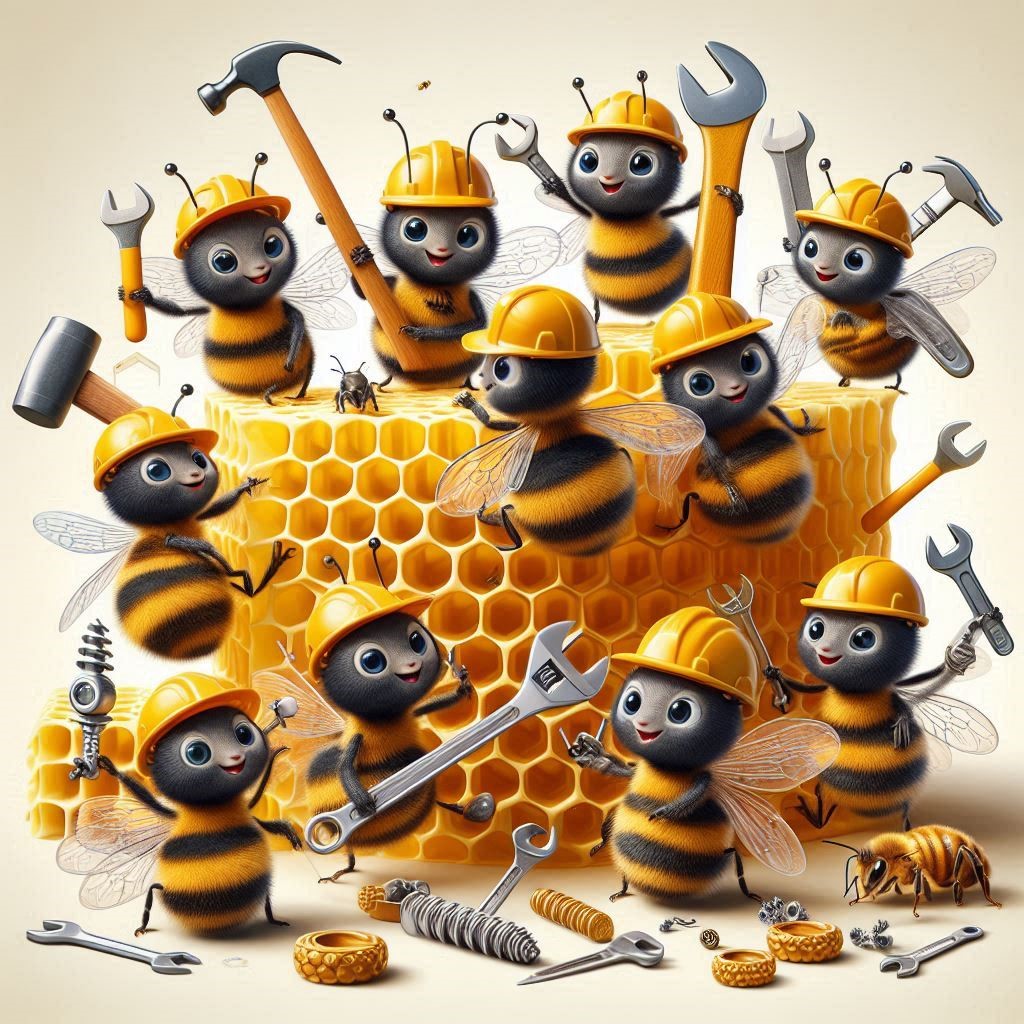 How Bees Shape Our Environment and Food Security
How Bees Shape Our Environment and Food Security
Bees are nature’s tiny powerhouses, playing a crucial role in maintaining the delicate balance of our ecosystems and ensuring our food security. These industrious insects are more than just honey producers; they’re essential pollinators that support biodiversity and agricultural sustainability across the United States and beyond.
The Pollination Powerhouse
Bees are master pollinators, transferring pollen between plants and enabling reproduction for countless plant species. This process is vital for both wild plants and agricultural crops. In fact, about one-third of the world’s food production depends on bee pollination, making these insects indispensable for our food security.
In the United States, bees contribute significantly to crop production. They pollinate a wide variety of fruits, vegetables, and nuts, including almonds, apples, blueberries, and cucumbers. Without bees, our diets would be far less diverse and nutritious.
Economic Impact and Agricultural Sustainability
The economic value of bee pollination is staggering. While specific figures for the US are not provided in the search results, it’s worth noting that in the UK alone, bee pollination is estimated to be worth £1.8 billion annually to farmers. The impact in the US is likely to be even more substantial, given the country’s larger agricultural sector.
Bees support agricultural sustainability by:
- Increasing crop yields
- Improving the quality of produce
- Reducing the need for artificial pollination methods
Guardians of Biodiversity
Bees play a crucial role in maintaining biodiversity by pollinating a wide variety of plant species. This support extends beyond crops to wild plants, which provide food and habitat for countless other animals. In the diverse landscapes of the United States, from the prairies of the Midwest to the forests of the Pacific Northwest, bees help sustain complex ecosystems.
Environmental Health Indicators
Bee populations serve as important indicators of overall environmental health. Changes in bee populations can signal broader environmental issues, such as habitat loss, pesticide use, or climate change. By monitoring bee populations, scientists and policymakers in the US can gauge the health of various ecosystems and take necessary conservation measures.
Challenges Facing Bees in the US
Despite their importance, bees face numerous challenges in the United States:
- Habitat loss due to urbanization and intensive agriculture
- Pesticide use, particularly neonicotinoids
- Climate change altering flowering patterns and bee behavior
- Diseases and parasites, such as the Varroa mite
Conservation Efforts
Recognizing the critical role of bees, various conservation efforts are underway across the US:
- Planting pollinator-friendly gardens in urban and suburban areas
- Implementing integrated pest management practices to reduce pesticide use
- Protecting and restoring natural habitats
- Supporting research into bee health and conservation strategies
How You Can Help
Everyone can contribute to bee conservation:
- Plant a variety of native, bee-friendly flowers in your garden
- Avoid using pesticides in your yard
- Support local beekeepers by buying local honey
- Create bee habitats by leaving some areas of your garden wild
- Educate others about the importance of bees
By understanding and supporting bees, we’re not just helping these fascinating insects – we’re investing in the health of our environment, the security of our food supply, and the biodiversity that makes our ecosystems thrive. From the bustling cities to the vast countryside, bees are working tirelessly to keep America blooming and productive.
To create a bee-friendly environment and support these essential pollinators, here are some answers to your questions:
Best native flowers to attract bees:
- Echinacea (Coneflower)
- Black-eyed Susan
- Goldenrod
- Aster
- Bee balm
- Milkweed
- Sunflowers
- Wild geranium
- Joe-Pye weed
- Blazing star
Creating a bee-friendly garden in a small space:
- Use vertical gardening techniques with hanging baskets or wall planters
- Plant in containers on balconies or patios
- Create a window box garden with bee-friendly flowers
- Utilize raised beds to maximize space
- Incorporate flowering vines on trellises or fences
Essential herbs for a bee-friendly garden:
- Lavender
- Rosemary
- Thyme
- Mint
- Sage
- Oregano
- Basil
- Borage
- Chives
- Lemon balm
Building a bee hotel:
- Use a wooden box or container with a sloped roof to keep out rain
- Fill the box with hollow stems, bamboo tubes, or drilled wooden blocks
- Ensure the tubes are 4-8 inches deep and vary in diameter from 2-10mm
- Place the hotel in a sunny spot, facing south or southeast
- Mount it securely at about 3-5 feet off the ground
- Provide a small overhang to protect the nest entrances from rain
Best natural pest control methods for gardens:
- Companion planting (e.g., marigolds to repel pests)
- Introduce beneficial insects like ladybugs and praying mantises
- Use neem oil spray for fungal diseases and soft-bodied insects
- Create garlic or hot pepper sprays as natural repellents
- Handpick larger pests like caterpillars and beetles
- Use diatomaceous earth to control crawling insects
- Set up physical barriers like row covers or netting
- Encourage birds and bats as natural predators
- Practice crop rotation to disrupt pest life cycles
- Maintain healthy soil to promote strong, pest-resistant plants
By implementing these strategies, you can create a thriving, bee-friendly garden that supports pollinators while naturally managing pests.